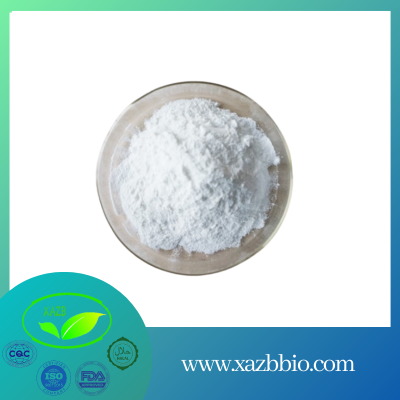Types and application of biopesticides
-
Last Update: 2010-04-20
-
Source: Internet
-
Author: User
Search more information of high quality chemicals, good prices and reliable suppliers, visit
www.echemi.com
1 The concept and species of biopesticides biopesticides are substances with pesticide effect extracted from microorganisms, plants and animals Such substances are relatively safe for people, livestock and crops, and generally do not cause pollution to crops and the environment According to drug sources, biopesticides can be divided into microbial biopesticides, plant biopesticides and animal biopesticides Microbial pesticides include fungi, bacteria, actinomycetes, yeasts and viruses Botanical biopesticides refer to the components with antibacterial, antiviral or insecticidal effects extracted from plants; or the new substances with pesticide activity separated and purified from plants as structural templates to carry out multi-level optimization of structure, so as to produce new pesticides with low toxicity and high efficiency, which are called botanical pesticides Animal biopesticides refer to toxins or hormones (such as brain hormones and sex pheromones) produced by animals They are toxic to pests, or inhibit the growth and development of insects and interfere with metabolism, so as to control the harm of pests to crops, forests and fruit trees 2 The application of biopesticides microbial biopesticides is Bacillus thuringiensis Since the discovery of Bacillus thuringiensis (BT) by Japanese scientists in 1901, scientists at home and abroad have carried out extensive research on it, accumulated a large number of research data and achieved important results It is reported that more than 60000 strains of Bacillus thuringiensis have been preserved, and more than 100 kinds of Bacillus thuringiensis products have been prepared, which are used to control agricultural and forestry diseases and insect pests worldwide Bacillus thuringiensis products account for 90%, and are widely used to control rice bracts, rice leaf roller and armyworm, pine caterpillar, tea caterpillar and corn borer 。 Baculovirus, a microbial pesticide, has been used as a biological control agent and synergist to control crop and forest pests Plant biopesticides: it is reported that there are more than 2400 kinds of insecticidal plants, 2000 kinds of bactericidal plants and 1000 kinds of weeding plants in the world In China, as early as the 1930s, the research on botanical biopesticides has been carried out In recent years, the research on botanical biopesticides is more systematic and in-depth So far, there are more than 40 kinds of registered botanical biopesticides The main insecticidal plants are pyrethrum of Compositae, which is toxic to many kinds of insects, such as cabbage, aphid, mosquito and fly; the extract of Marigold is toxic or repellent to bean aphid, cabbage and so on Neem, Melia azedarach and Melia azedarach, such as neem extract neem, have repellent and Antifeedant effects on fruit pests and vegetable pests, and are harmless to human and livestock Celangulin, the extract of Celastraceae, has good control effect on rice, corn and vegetable pests There are also Sabina in Cupressaceae, Stellera chamaejasme in daphneceae and other plants, which are also rare plant pesticide resources It is reported that according to the international classification standard of biopesticides, the proportion of biopesticides in the total amount of pesticides is about 2% now, and the situation in China is so great that the proportion of agricultural antibiotics is not more than 11%, so it is far from meeting the market demand The main body of pesticide market is chemical pesticide Therefore, in order to develop ecological agriculture, ensure the safety of agricultural and livestock products, meet the challenge of "green box policy" of international trade, and improve the competitiveness of China's agricultural products in the international market, it is necessary to increase efforts to develop and produce more biological pesticides; to develop high-efficient and low-toxic chemical pesticides to meet the demand of pesticide market, it is pesticide researchers and The long-term and arduous task of production enterprises.
This article is an English version of an article which is originally in the Chinese language on echemi.com and is provided for information purposes only.
This website makes no representation or warranty of any kind, either expressed or implied, as to the accuracy, completeness ownership or reliability of
the article or any translations thereof. If you have any concerns or complaints relating to the article, please send an email, providing a detailed
description of the concern or complaint, to
service@echemi.com. A staff member will contact you within 5 working days. Once verified, infringing content
will be removed immediately.







